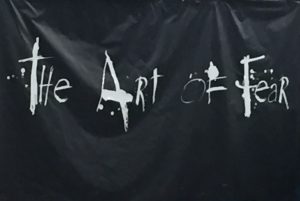December 1, 2016 • Newsletter
Message from Elaine

As 2016 crawls to a close, we wanted to focus on protecting creative, personal, and professional boundaries, particularly with the holiday season in mind. As desperately as we all crave community and support from those who value our perspectives and what we do, it’s important to also know which boundaries to maintain.
Perhaps that means limiting our social media interaction. Perhaps that means prioritizing exercise or sleep. Perhaps that means declining a few invitations here and there. Perhaps it means revisiting record-keeping systems to ensure the boundary between personal and professional expenses is intact. Perhaps it means deferring a project to next month, even if you really could take it on today.
Perhaps it means something bigger.
We would be remiss to talk about boundaries this month without acknowledging the threats to boundaries many are still feeling following last month’s election results. We would be remiss to ignore the threats to the legal boundaries of the Standing Rock Sioux Tribe. We would be remiss to ignore the legal boundaries some violate frequently to silence voices, actions, and discourse, through both action and passive neglect.
There’s no perfect prescription for maintaining our own boundaries, in the context of our creativity, our personal interactions, or our professional dealings. But what we can do, what is within our control, is to pay attention to the signals our brains, hands, and hearts are giving us. And we can respond accordingly.
We can also respect others’ boundaries. We have no idea what others may be processing this month. We have no idea whether the holiday season, political events, or even the gray winter skies affect others more than they affect us. We have no idea if others process their feelings quietly in isolation or publicly through events. And it doesn’t matter. We can protect and respect our own boundaries just as we can protect and respect those of others. And through our empathy and the respectful community that results, 2017 will begin with a solid foundation.
By the end of the month, creative individuals will:
- Identify healthy boundaries to protect creative output, personal exertion, and professional growth.
- Recognize the pros and cons of various business entity types.
- Practice enforcing boundaries through creative ways of saying “no “
- Focus strategic planning efforts on narrowing, rather than broadening, descriptions of work.
What We’re Doing
Our online, self-study class this month is To Be or Not to Be an Entity. It usually takes 3-4 hours to complete, all on your own time.
To Be or Not to Be an Entity (3 hours, Self-Study, $49)
Creative people create. But the “entity type” in which they create can have major implications for taxes, liability, and collaborations. This course provides participants with an overview of basic business entity types, while also covering the challenges and opportunities each pose to creative entrepreneurs. Participants will gain a strong foundation of knowledge regarding the formation, management, and tax implications for each entity. Particular focus will be given to sole proprietors, LLCs, S corporations, non-profits, L3Cs, and B corporations and where each makes sense within a creative career.
At Minerva Financial Arts, we care about artists and the community… A lot. All our courses are distinguished from others by Elaine’s hands-on, supportive approach to coaching you through the material as you build your overall (successful) creative career. Enjoy!
Creative Coaching: New Year’s Special
Jump start 2017 with our New Year’s Coaching Special: A five-session package for $350 (instead of $450). Contact Elaine for more information.
What We’re Talking About
Follow along with the topic this month through our blog. These posts are meant to help all creative individuals – writers, musicians, dancers, artists, designers – manage their artistic communities and healthy boundaries in authentic, effective, and creative ways.
Here’s a sneak peak of what we’ll be publishing each Monday:
- Entity Type Overview – What three things should I be thinking about?
- Creative Ways of Saying No – How to say “no” so the recipient is thrilled with your choice.
- Editing Your Strategic Plan – Why knowing what you don’t do is at least as important as knowing what you do.
- Employment Boundaries – Knowing the difference between an employee and a contractor.
Other Resources
Still want more? Here are some other resources you may find helpful this month.
For Artists
Selecting Your Business Structure
Securing Social Media Boundaries
For Arts Managers
New Overtime Rules: Stay Tuned!
Boundaries
We hope you enjoy this month’s content as you build, maintain, and enforce your own healthy boundaries. Next month, we’ll focus on Budgeting. Until then, all the best with your financial empowerment…


